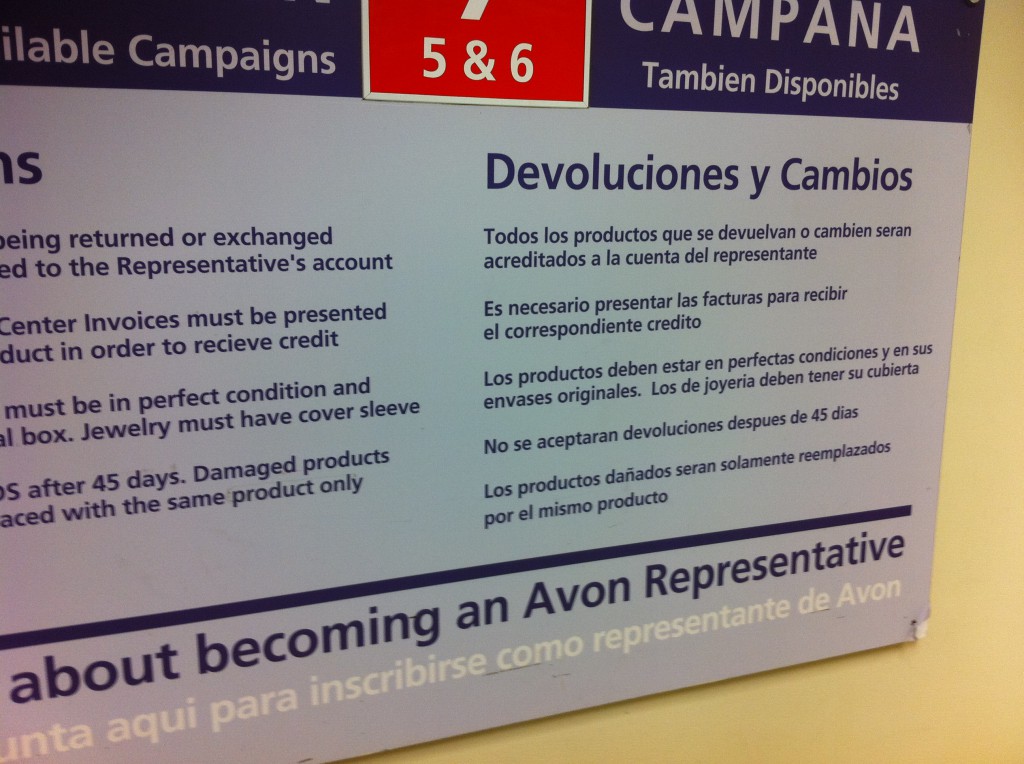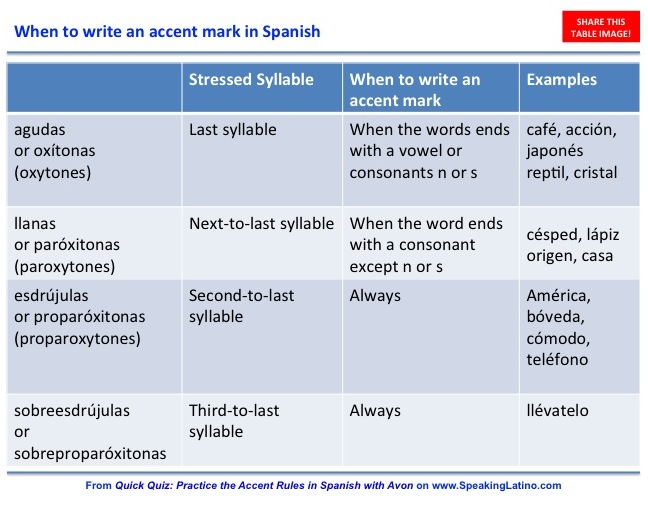
After five years working for Avon, I’m definitely hooked on their products. So the other day I went to their store in Miami to stock up with some of my favorites. At the entrance there was this sign with their return and exchange policies. Guessing what’s wrong with this sign is easy. If you don’t see it immediately, read through it again. You will eventually notice the basic Spanish mistake.
All the accent marks in this sign are missing, making it an excellent tool for the Speaking Latino readers to practice the rules. Here is how you do it step by step:
Step 1: Divide the word in syllables. Check out this page where you can enter a word and it will divide it in syllables.
Step 2: Identify the stress syllable.
Step 3: According to where the stress syllable is located, determine if it is:
Step 4: Check for diphthong (diptongo), triphthong (triptongo) or hiatus (hiato) and follow the rule.
Diptongo (diphthong) – When there are two vowels (with at least one closed vowel i or u) in the same syllable.
Hiato (hiatus) – When two continuous vowels are broken in different syllables. This happen when an open vowel and closed vowel (that are i or u) with accent mark are together. For example: país (pa-ís), río (rí-o) or púa (pú-a). Hiatus are also form with two open vowels (that are a, e, o) such in aéreo (a-é-re-o) and paella (pa-e-lla).
Triptongo (triphthong) – When three vowels (an open one a, e, o in between two closed ones) in the same syllable. This happen a lot with verbs conjugate in the vosotros form such as estudiáis (es-tu-diáis) and anunciáis (a-nun-ciáis) where there is always an accent in the open vowel. Besides from the vosotros form here are other triphthong examples: buey, vieira or semiautomático.
Hiato-diptongo (hiatus-diphthong) – When the accent mark is on the first closed vowel of a triphthong this one needs to be broken forming a combination of hiatus + diphthong. This is also common in the vosotros form, for example adivinaríais (a-di-vi-na-rí-ais) and repararíais (re-pa-ra-rí-ais).
Step 5: Single syllable words don’t have accent marks. There are only eight exceptions that have accent mark to differentiate the same word with two meanings.
Accent marks missing from the Avon sign
Now that we have reviewed the rules (I tried to be as concise as possible) we can use the Avon sign in the photo to practice. Here are all the words that are missing the accent mark:
| Word | Syllables | Type | Comments |
| también | tam-bién | aguda | ié makes a diphthong and stays together |
| serán | se-rán | aguda | |
| crédito | cré-di-to | esdrújula | |
| joyería | jo-ye-rí-a | hiato rule | ía makes a hiatus and needs to be broken |
| aceptarán | a-cep-ta-rán | aguda | |
| después | des-pués | aguda | ué makes a diphthong and stays together |
| días | dí-as | hiato rule | ía makes a hiatus and needs to be broken |
| aquí | a-quí | aguda |
Was the keyboard of the person who made this sign not programmed in basic Spanish or the person simply didn’t know the accent rules. What do you think?
Check out these other articles about Spanish Lessons.
